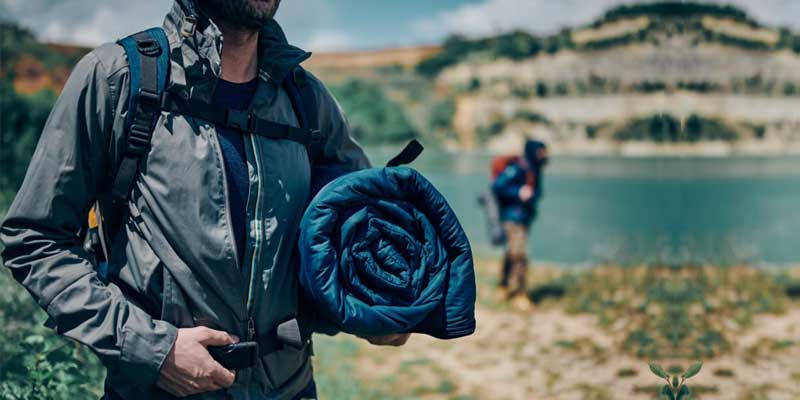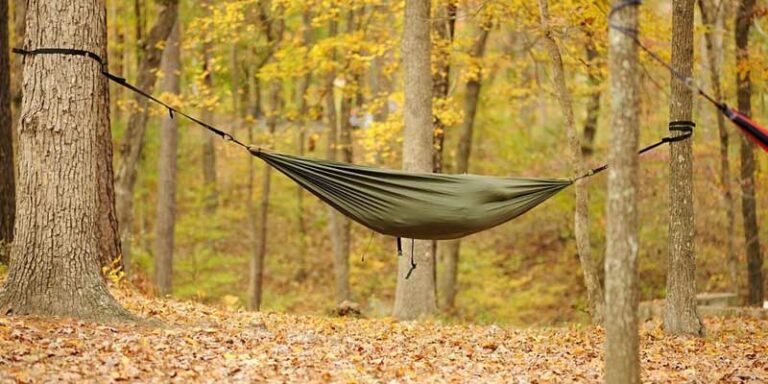A sleeping bag is one of the most in-demand pieces of gear for camping. A good sleeping bag is the foundation of a good night’s sleep outdoors. You can find sleeping bags in all kinds of price ranges with varying ranges for different types of weather situations. But is a sleeping bag really required for camping? The answer is no! You don’t need a sleeping bag for camping and can certainly do fine without it but it depends on the situation. In some cases, you don’t need a sleeping bag at all like hammock camping while you should use a sleeping bag in others like camping in cold weather conditions.
There are viable alternatives to a sleeping bag that can work equally as well if you know what you are doing. Just keep in mind that you would have to combine two or more of these alternatives to achieve the same warmth as from a sleeping bag. Many of these alternatives should also only be used in mild or warm conditions.
Why are sleeping bags so popular for camping?
Sleeping bags are one of the most popular camping gear in the backpacking and camping community. The reason for this popularity is that they make it quite easy to stay warm during the night in the outdoors. Sleeping bags have a high warmth-to-weight ratio making them ideal for backpacking trips. You can get a lot of warmth from low weight, something that other camping gear rarely provides.
Another reason for the popularity of sleeping bags is their simplicity. When you combine a sleeping bag with a sleeping pad, it makes for a simple sleeping system. Without a sleeping bag, you would have a complicated sleeping system to keep yourself. Complicating the sleeping system makes it harder to manage and time-consuming to set up. A sleeping bag relieves you from all these issues.
But sleeping bags do have a disadvantage; they are not the lightest and the most compact solution. Sleeping bags can weigh a fair bit and take up a lot of space in the backpack which is concerning if you will be hiking for long distances before setting up camp. It shouldn’t be a surprise that backpackers, especially, ultralight backpackers look for viable alternatives to a sleeping bag.
Sleeping bag alternatives
You can do perfectly fine without a sleeping bag while camping. Here are a few things you can use to replace a sleeping bag:
Camping quilts
A top quilt is the best alternative to a sleeping bag. A top quilt is just like a sleeping bag but without the hood, the back, and the zipper. The concept of having a backless sleeping bag is that the insulation on the back of the sleeping bag becomes useless underweight.
The fill inside a sleeping bag uses trapped within the loft of the fill. Air is a bad conductor of heat so it prevents the body heat from escaping into the ground. But bodyweight compresses the loft squeezing the air out of the fill making the fill lose its insulation capability.
Since the back is useless in a sleeping bag, it is removed from the quilt to save weight. The hood and the zipper are also removed to save weight which can also be seen in ultralight sleeping bags. As a result, top quilts are lighter than sleeping bags of similar performance. Top quilts are more packable because they have less fabric and no metal zipper.
Top quilts also allow for more versatility because they allow for more ventilation, unlike sleeping bags. Due to their lightweight and higher warmth-to-weight ratio than sleeping bags, top quilts are becoming popular among ultralight backpackers. Manufacturers have also started to integrate quilt attachment systems in their sleeping pads. These attachment systems allow the quilt and the pad to completely wrap around the body like a sleeping bag.
In certain situations and camping styles, it is easier to handle top quilts than sleeping bags like in hammock camping. Top quilts allow easy entry and exit and also allow room to move in the hammock.
The lack of a hood and enclosure like that of a sleeping bag leaves top quilts more susceptible to drafts. In that case, you would have to add a quilt liner to stay warm. It is also worth noting that quilts are equally as expensive as sleeping bags if not more but they are the best alternative to a sleeping bag.
Blankets
Throws and blankets are an ancient way of staying warm during the night, one, that is used even today. Camping blankets are another great alternative to sleeping bags, and in some cases, even camping quilts mentioned above.
Camping blankets are like quilts but with a lot less weight and bulk. They are usually made of synthetic materials like ripstop nylon or polyester. They can have both, synthetic and down fill. Camping blankets are extremely lightweight and pack extremely compact.
Wool blankets, the ones we use at home, are not a practical option for backpacking but they can be used while car camping. Wool blankets are warmer than camping blankets because of their size and thickness. But they are very bulky and heavy.
Blankets have the same problem as quilts. Because they don’t enclose the body like a sleeping bag, they lose some of their insulation and are susceptible to drafts. Make sure your blanket is larger so that you can wrap yourself in it.
You can also use space blankets for camping. Space blankets are emergency blankets with a thin metal layer that is used to reflect heat back towards the body. Space blankets are extremely lightweight but they are not warm at all. They rely on a heat source to reflect heat, in this case, your body, and allow you to retain up to 90% of your body heat. They cost less but they are disposable so the cost adds up. Space blankets are a good option for warm nights and when you need a quick alternative to a sleeping bag.
Bivy sacks
Bivy sacks are personal water-proof shelters that are popular among climbers and ultralight backpackers. It has the same minimalist approach as that of a hammock. They look like a miniature single-person tent when set up. They can be water-resistant as well as waterproof depending on how much you spend on them. Most bivy sacks are designed to be used with a sleeping bag but they can also be used on their own in warm conditions.
Hammock camping
You can ditch a sleeping bag completely if you adopt hammock camping instead of tent camping. While you can use a sleeping bag in a hammock setup, it is hard to manage it in the hammock. With purpose-built hammock gear like top quilts and underquilts, you can drop a sleeping bag completely.
Under quilts are just like top quilts but they are made to hang under the hammock for insulation. You can use a top quilt or a blanket with an under quilt to completely insulate yourself in your hammock. One downside of underquilts is that they are expensive. Alternatively, you can use a hammock sleeping pad to insulate yourself in the hammock if you can’t afford an underquilt. But hammock sleeping pads only provide limited insulation and can’t keep you warm in cold conditions.
Duvets
Duvets are another popular choice to use in place of a sleeping bag. A duvet is somewhat related to a common comforter. It is soft and compact compared to a sleeping bag. It is not usually quilted or stitched and comes in different sizes and a variety of materials. The fill inside a duvet can be synthetic as well as down. Although they are warm enough to be used on their own, you can add blankets to make them warmer in cold conditions.
Warm clothing
If you don’t want to use a sleeping bag or you can’t for some reason, then you can sleep in layers of clothes to keep yourself warm. Everyone should bring an extra pair of clothes and a jacket with them in case the temperature drops more than expected. You can bundle up in layers to keep yourself warm while sleeping. While this technique is useful during warm or mild weather, it is not recommended in cold weather and should only be used as a last resort.
Conclusion
Sleeping bags are a popular piece of equipment because they are a fundamental part of the sleeping system. The reason for their popularity is their simplicity. By combining a sleeping bag with an insulated sleeping pad, you can stay warm throughout the night. But a sleeping bag is not strictly required for camping. However, alternatives to a sleeping bag complicate the sleeping system making it harder to manage to more time-consuming to set up.
Sleeping bags provide insulation to keep you warm. Anything that can keep you warm during the night can be used as a replacement for a sleeping bag. Quilts, blankets, bivy sacks, duvets, and warm clothes along with a sleeping pad can be used as replacements for a sleeping bag. You may have to combine some of these alternatives in cold weather like using blankets and wearing warm clothes to keep yourself warm.



